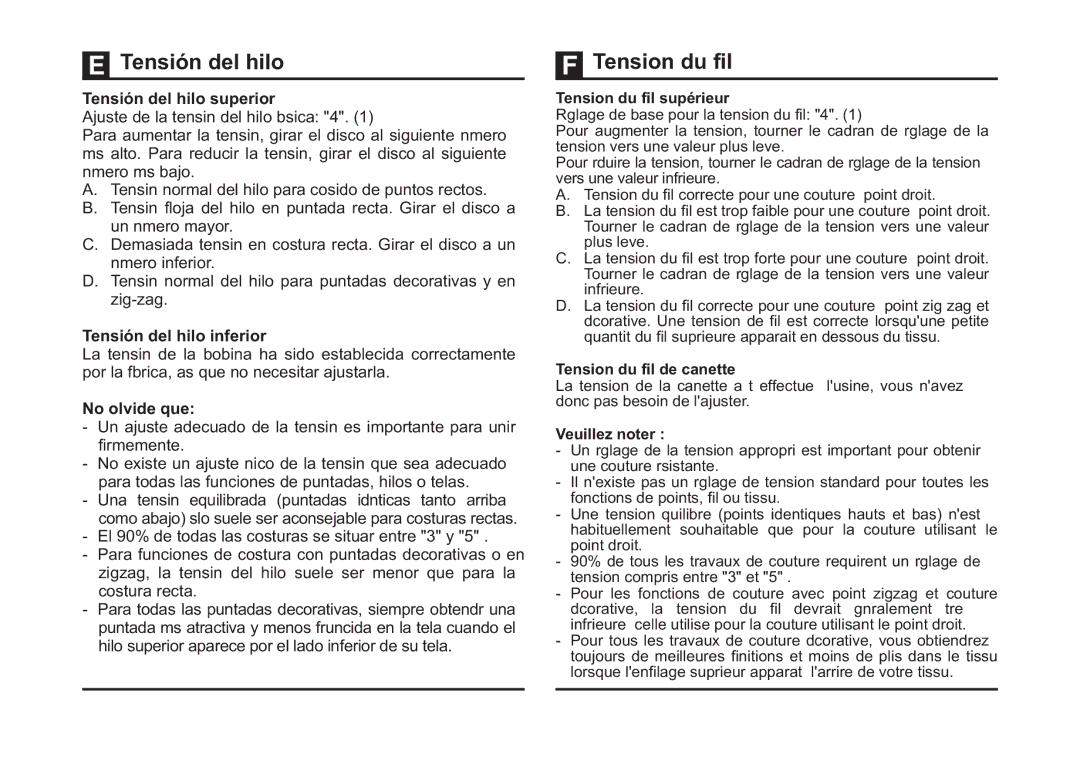4423 specifications
The Singer 4423 is a versatile and efficient sewing machine designed to cater to both novice and experienced sewers. Known for its robust build and impressive features, this machine has garnered attention for its performance and ease of use.One of the standout characteristics of the Singer 4423 is its powerful motor, which is capable of sewing at speeds up to 1,100 stitches per minute. This high-speed capability allows users to complete projects quickly and efficiently, making it an excellent choice for those who need to finish tasks in a timely manner. The machine's heavy-duty metal frame provides stability and durability, ensuring that it can withstand the rigors of regular use over time.
The Singer 4423 is equipped with a variety of stitching options, including 23 built-in stitches, which provide ample choices for various sewing projects. These include basic, decorative, and stretch stitches, making it suitable for everything from hemming to quilting or creating intricate patterns. The adjustable stitch length and width offer further customization to meet the specific needs of each project.
Another notable feature is the automatic needle threader, which simplifies the threading process and minimizes frustration, especially for beginners. The top drop-in bobbin system allows for quick and easy bobbin changes, as well as clear visibility while monitoring thread levels. This feature enhances the overall efficiency of the sewing process.
The Singer 4423 also boasts a presser foot lifter that enables users to adjust the height of the presser foot easily, accommodating various fabric thicknesses with minimal hassle. The included accessories, such as different presser feet, a seam ripper, and screwdrivers, provide additional versatility, making it a comprehensive package for users.
In terms of technology, the Singer 4423 showcases a user-friendly interface that includes a stitch selector dial for easy navigation. The mechanical design ensures reliability and uncomplicated maintenance, ensuring that sewers can focus on their creativity without the worry of complex settings.
Overall, the Singer 4423 stands out as a dependable sewing machine, merging powerful performance with user-friendly features. Its durability, speed, and variety of stitching options make it an excellent investment for anyone looking to explore the world of sewing. Whether for crafting garments, home décor, or engaging in precise alterations, this machine is engineered to deliver exceptional results.

